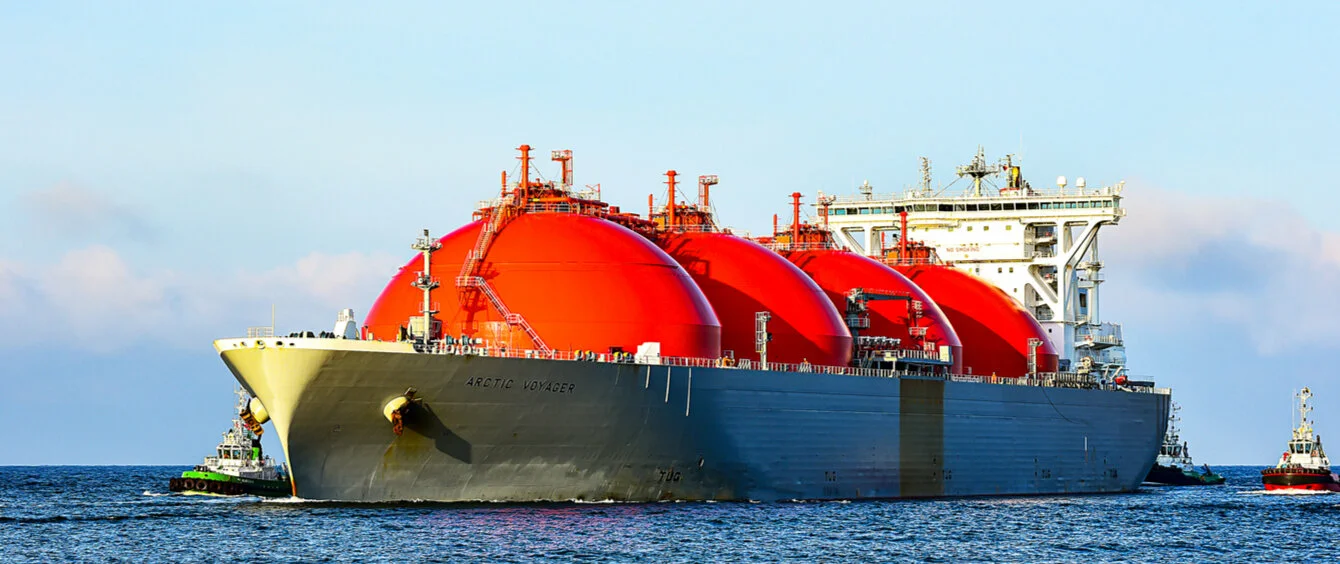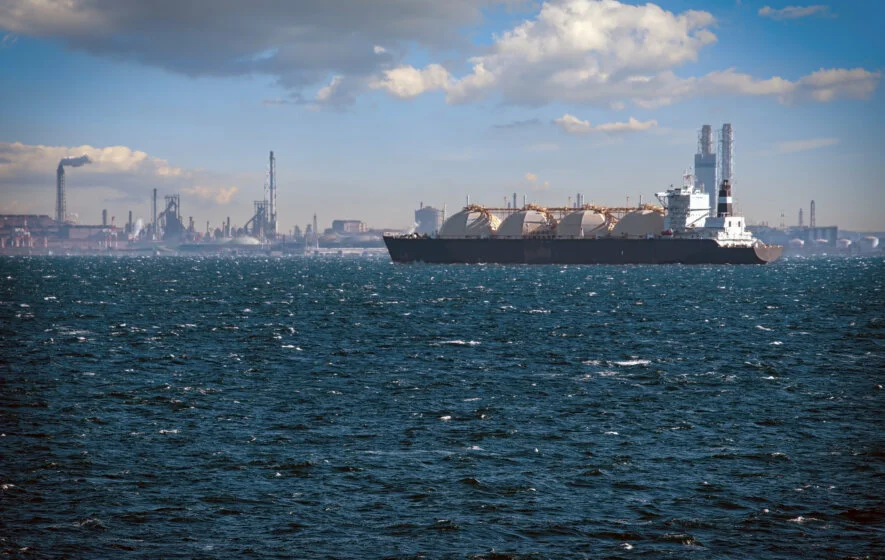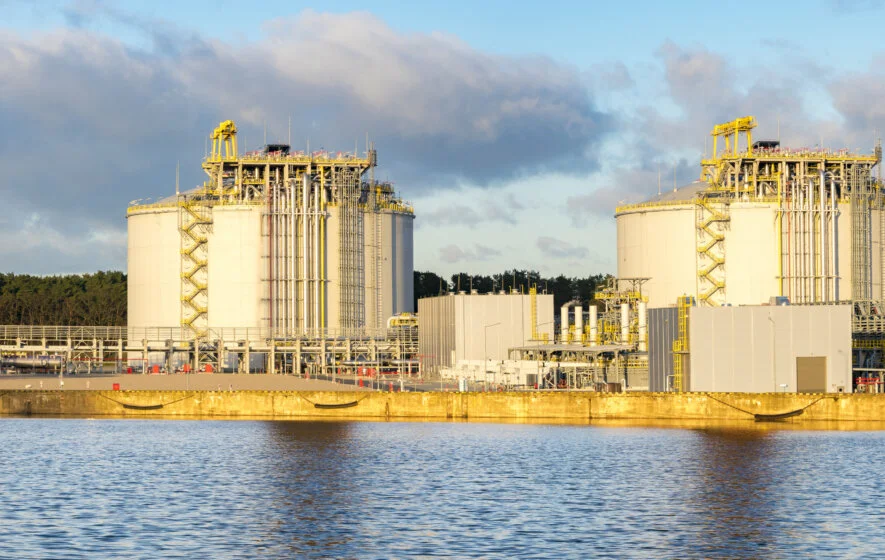The heat is on for the global gas market. According to the International Energy Agency (IEA), last year, investors green-lit more liquefaction capacities than ever before. By cooling natural gas down to -160 degrees Celsius, these plants are able to reduce the fuel to one six hundredth of its volume. This then means it can be transported via cargo ship, thus circumventing the need for gas pipeline infrastructure.
Liquefied natural gas is therefore particularly attractive in overseas trade, but is also useful for shorter distances, where constructing pipelines is out of the question for technical, economic or political reasons.
LNG instead of pipelines
The plants approved in 2019 should be able to liquefy 96 billion cubic metres of natural gas per year. Three times the capacity that was green-lit through investors in 2018. Global liquefaction capacity, currently sitting at around 600 billion cubic metres, is expected to gain ground in the coming years. And right there, matching its pace will be LNG, solidifying its position on the global natural gas market.
Confirmed investments of liquefaction capacity
In 2019, global LNG generation capacity was around 600 billion cubic metres per year (Source: IEA)Expansion of liquefaction capacity
Being the only way to transport larger quantities of natural gas to industrial island locations Japan and Taiwan, for some time, it was only in East Asia that LNG was of much importance. The same goes for South Korea, where access to the mainland from the peninsula is essentially barred by North Korea. Whilst the People’s Republic of China, which attaches great importance to diversifying its sourcing countries, has also become a major customer in recent years. These four nations account for more than 80 percent of global LNG imports. But Europe is also expanding its fleet of regasification plants, which are needed to convert LNG back into methane.
Japan maintains pole position
Having been a liquefied natural gas customer for over 50 years, Japan, incidentally also the world’s biggest LNG importer, is no newcomer to the LNG game. Talks with Russia about a pipeline that could deliver natural gas from the southeasternmost tip of Siberia all the way to Japan have so far remained fruitless. At present it looks more likely that the Russian export monopolist Gazprom will expand its natural gas liquefaction capacity in Vladivostok.
This is probably one of the reasons why analysts from London-based data and information service IHS Markit expect Japan to remain the biggest importer of LNG until at least 2022 – even though China, currently in close second, already made moves to purchase more liquefied gas than its smaller neighbour in December 2019.
In South Korea, the third-largest LNG importer in the world, imports spiralled in 2019, as the nation relied more heavily on nuclear power. However, experts expect LNG deliveries to South Korea to be on-going over the coming years – not least as the third-largest economy in East Asia has its sights set on decommissioning more than a quarter of its coal-fired power plants.
LNG for diversification
Elsewhere in the world, local and regional gas markets linked by pipelines have been the status quo for decades. Europe still sources most of its gas from its own reserves in the North Sea, Russia and North Africa, among other places. However, since the EU’s Third Energy Package was adopted in 2009, competition has grown ever more fierce, pushing more LNG into Europe.
Since then, several European countries have begun to diversify their gas suppliers with the help of LNG terminals. Last year, Poland, for example, imported more natural gas as LNG than ever before. And it would seem as if the Netherlands, too, in order to compensate for its own dwindling gas capacities, is steering away from exclusively relying on pipeline gas, which it could probably source in sufficient quantities from Norway and Russia via Germany or the UK. In 2019, the Netherlands tripled its LNG imports.
Latvia is planning on building a floating regasification terminal off the Gulf of Riga, amidst plans to supply Estonia and Latvia via the expanding Baltic gas network. Alternatively, the Baltic States could also source their gas via an LNG terminal which Finland is building in the port city of Hamina.
Playing second fiddle in Germany
Until recently, LNG has barely had a look-in in Germany, where it is considered to be a low-emission alternative to shipping oil or for diesel trucks. On a global scale, however, these applications only account for a negligible share of the LNG market.
Import terminals in Germany have yet to make it beyond the proposal stage, although there are currently plans in the works to build regasification plants in Brunsbüttel and Wilhelmshaven. Until then, however, Germany will have to source its natural gas imports exclusively by pipeline – around 50 percent from Russia, a solid quarter from Norway, with just less than a quarter coming from the Netherlands.
Global natural gas boom likely
Worldwide, the consumption and thus the trade of natural gas is expected to continue to expand in the coming years. The energy source is now increasingly being used for power generation, where it is seen as a low-emission and versatile alternative to coal.
According to the IEA, plans to expand the LNG infrastructure are unlikely to change fundamentally, even in light of an impending recession. Although things do look different than they did in mid-February when the LNG report was published, says IEA analyst Sean P. O’Brien in en:former, this would more likely delay the aforementioned LNG investments rather than render them obsolete: “It’s important we remember that these are long term, capital-intensive projects. Whether or not they proceed is evaluated based on the ‘big picture’ gas market outlook on time horizons of 20 plus years.”
Photo credit: shutterstock.com, Vytautas Kielaitis


